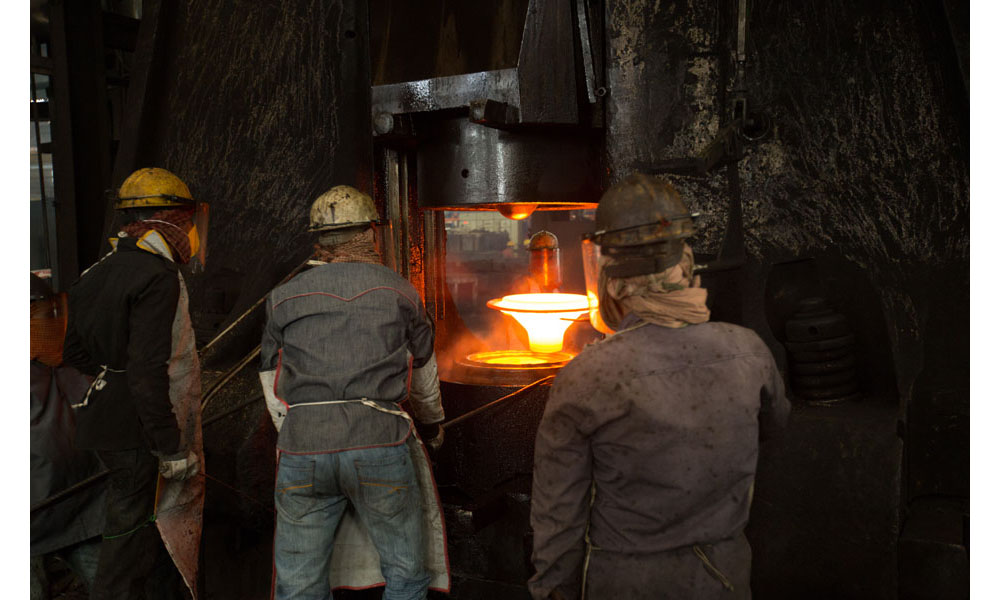AISI 1008 Carbon Steel (UNS G10080)
Steels containing mostly carbon as the alloying element are called carbon steels. They contain about 1.2% manganese and 0.4% silicon. Nickel, aluminium, chromium, copper and molybdenum are also present in small quantities in the carbon steels.
AISI 1008 Carbon Steel (UNS G10080)
Introduction
Steels containing mostly carbon as the alloying element are called carbon steels. They contain about 1.2% manganese and 0.4% silicon. Nickel, aluminium, chromium, copper and molybdenum are also present in small quantities in the carbon steels.
AISI 1008 carbon steel has excellent weldability, which includes projection, butt, spot and fusion, and brazeability. The following datasheet will provide more details about AISI 1008 carbon steel.
Chemical Composition
The following table shows the chemical composition of AISI 1008 carbon steel.
| Element | Content (%) |
|---|---|
| Iron, Fe | 99.31-99.7 % |
| Manganese, Mn | 0.30-0.50 % |
| Carbon, C | 0.10 % |
| Sulfur, S | 0.050 % |
| Phosphorous, P | 0.040 % |
Physical Properties
The physical properties of AISI 1008 carbon steel are outlined in the following table.
| Properties | Metric | Imperial |
|---|---|---|
| Density (composition 0.06% C, 0.38% Mn, 0.01% Si, annealed at 925°C) | 7.872 g/cm3 | 0.2844 lb/in³ |
Mechanical Properties
The mechanical properties of cold drawn AISI 1008 carbon steel are tabulated below.
| Properties | Metric | Imperial |
|---|---|---|
| Tensile strength | 340 MPa | 49300 psi |
| Yield strength (depending on temper) | 285 MPa | 41300 psi |
| Elastic modulus | 190-210 Gpa | 27557-30458 ksi |
| Bulk modulus (typical for steel) | 200 GPa | 29000 ksi |
| Shear modulus (typical for steel) | 80.0 GPa | 11600 ksi |
| Poisson’s ratio | 0.27-0.30 | 0.27-0.30 |
| Elongation at break (in 50 mm) | 20% | 20% |
| Reduction of area | 45% | 45% |
| Hardness, Brinell | 95 | 95 |
| Hardness, Knoop (converted from Brinell hardness) | 113 | 113 |
| Hardness, Rockwell B (converted from Brinell hardness) | 55 | 55 |
| Hardness, Vickers (converted from Brinell hardness) | 98 | 98 |
|
Machinability (based on AISI 1212 steel as 100 machinability) The machinability of group I bar, rod, and wire products can be improved by cold drawing |
55 | 55 |
Thermal Properties
The thermal properties of AISI 1008 carbon steel are tabulated below.
| Properties | Metric | Imperial |
|---|---|---|
| Thermal expansion co-efficient (@0.000-100°C/32-212°F) | 12.6 µm/m°C | 7 µin/in°F |
| Thermal conductivity (composition of 0.06% C, 0.4% Mn; 0°C ) | 65.2 W/mK | 452 BTU in/hr.ft².°F |
Other Designations
Equivalent materials to AISI 1008 carbon steel are as follows.
| AMS 5040F | AMS 5042F | AMS 5044D | AMS 5047Ac | AMS 5050F |
| AMS 5053C | ASTM A108 | ASTM A29 | ASTM A510 | ASTM A519 |
| ASTM A545 | ASTM A549 | ASTM A575 | ASTM A576 | SAE J403 |
| FED QQ-S-698 (C1008) | MIL-S-11310 (CS1008) | FED QQ-S-637 (C1008) | UNI CB 10 FU | SAE J1397 |
| SAE J412 | SAE J414 | ASTM A512 | ASTM A513 | ASTM A575 |
| ASTM A576 | ASTM A635 | ASTM A830 | DIN 1.0204 |
Applications
AISI 1008 carbon steel is primarily used in extruded, cold headed, cold upset, and cold pressed parts and forms.
FORGING
These are materials that are relatively easy to work with. They may be forged from a temperature of around 2400ºF (1315ºC), or some 300ºF (150ºC) below their solidus temperature.
HEAT TREATMENT
These steels would not normally be annealed and may be machined in the as-rolled or as-forged conditions.
These steel grades are also used in flat-rolled form and in such cases may undergo some form of severe deformation – deep drawing for instance. In such cases special heat treatment cycles are used, which may involve continuous coil annealing.
MACHINABILITY
Best machinability of these grades is normally obtained in the as-rolled or as-forged condition. If the parts are such that very different structures may obtain throughout the size of a part, then a normalizing treatment at around 1700ºF (925ºC) might be recommended.
WELDABILITY
These grades may be welded by all fusion methods.

